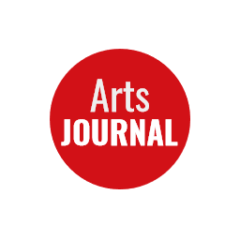“In European nations, “save our cultural institutions” is widely regarded as a necessary cause. In the United States, the same cry is not heard. What is going on? Were the arts always a negligible component of the New World experience, insufficiently cultivated? Or did they become negligible? Are we as a nation simply too young to dig deep expressive roots? Too diverse? Too much crippled by our original sins of slavery and the Indian Wars?” – American Purpose
Tag: 12.21.20
The Weird New Things Choreographers Had To Learn As They Created Dances Long-Distance
Annabelle Lopez Ochoa, who’s made more than a dozen short dance films since the COVID lockdowns began, and Corey Baker, creator of the (in)famous Swan Lake Bath Ballet, tell a reporter about how, as Baker put it, “we knew we had to make it all up” and how they handled the snafus they didn’t yet know to expect. – Dance Magazine
15 Objects That Symbolized 2020
Some of these objects are troubling, a few are ridiculous, many are ambiguous (though some, to be sure, are delightful). These are the objects that caused us to see the world in a new way this year — or the objects that this singular year forced us to consider anew. – Medium
New “Wonder Woman” Flops At the International Box Office
After months of delays, “Wonder Woman 1984” finally hit theaters over the weekend in 32 international markets. But the movie floundered at the box office. The Warner Bros. sequel earned just $38.5 million internationally over the weekend ahead of its debut in the US on Friday, when it will play in theaters and stream on HBO Max simultaneously. – Business Insider
Fast-Rising Artist Sven Sachsalber Dead At 33
“[He] developed a rich, singular voice and worked across media, bouncing seamlessly through performance, video, book projects, and paintings. This past year was a breakout moment for the artist.” – Artnet
For First Time, Ruins From Era Of Jesus Found At Garden Of Gethsemane
“Archaeological excavations by the Antiquities Authority ahead of construction unearthed a 2000-year-old ritual bath near the modern church at Gethsemane, together with the remains of a church from the Byzantine period (ca. 1500 years ago).” – The Jerusalem Post
What Drama Teachers Can Still Teach Over Zoom
William Church, director of theatre at Interlochen Center for the Arts, writes about the perhaps-unexpected opportunities and opportunities that online-only pedagogy offered in this year of quarantine and social distancing. – American Theatre
Gender-Neutral -e Ending In Spanish Is Starting To Catch On (Except At The Royal Spanish Academy)
‘Latinx” may seem ungainly in English, but it’s very awkward in Spanish. But use of latine as an alternative to latino/a, a formulation which started in Argentina (where even some universities, politicians and judges have started using it), is spreading among young people in Latin America and Spain, as is the -e ending more generally. Yet the Real Academia Española, the official arbiter of the language of Cervantes, will have nothing to do with it. That may not matter so much: as one Ecuadorian copy editor tells a reporter, the RAE is, quite literally, “a colonialist institution.” – The World (PRX)
How Fashion Appropriated The Styles Of Enslaved People
The experiences of enslaved people were not always deemed important enough to record for posterity, and the glimpses that have been preserved are often distorted by interventions of enslavers. We are left to wonder: Who are they? What were their names? What were their favorite colors? Why did they choose to be photographed on these particular occasions? Why did they style themselves in these ways? – Guernica
Art Versus Ideology – A Philosophical Battle
“No living artist I know of, however fervently activist, is renouncing art as a distraction from moral commitment, as the more extreme Constructivists did. But a good deal of recent polemical art suggests a use-by date that is not far in the future. Aesthetic judgment, based in experience, confirms differences between what is of its time and what, besides being of its time, may prove timeless. I feel that our present moment, marked by imbroglios of art and politics, forces the issue, even in face of tendencies a century old.” – The New Yorker
